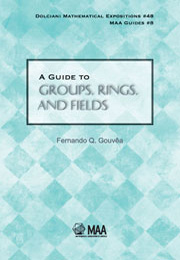Preface
Summary
Algebra has come to play a central role in mathematics. These days, analysts speak of rings of functions and semigroups of operators, geometers study braid groups and Galois coverings, and combinatorialists talk about monoidal ideals and representations of symmetric groups. The subject has become huge, and the textbooks have grown to match.
Most graduate students in mathematics take an algebra course that focuses on three basic structures: groups, rings, and fields, each with associated material: representations (of groups), modules (over rings), and Galois theory (of field extensions). This book is an attempt to summarize all of this in a useful way. One of my goals was to offer readers who have already learned some algebra a vision of how it all hangs together, creating a coherent picture. I had particularly in mind students preparing to take qualifying exams and those beginning to do their own research.
While I have included no proofs, I have often given my reader a few words that might be described as shadows of proofs. I have tried to indicate which results are easy and which are hard to prove. For the more straight-forward results I have pointed to the crucial insight or the main tool. Everywhere I have tried to track down analogies, connections, and applications.
In a formal textbook or a course, one is often constrained by the fact that our readers or students have not yet learned some idea or tool.
- Type
- Chapter
- Information
- A Guide to Groups, Rings, and Fields , pp. xv - xviiiPublisher: Mathematical Association of AmericaPrint publication year: 2012

